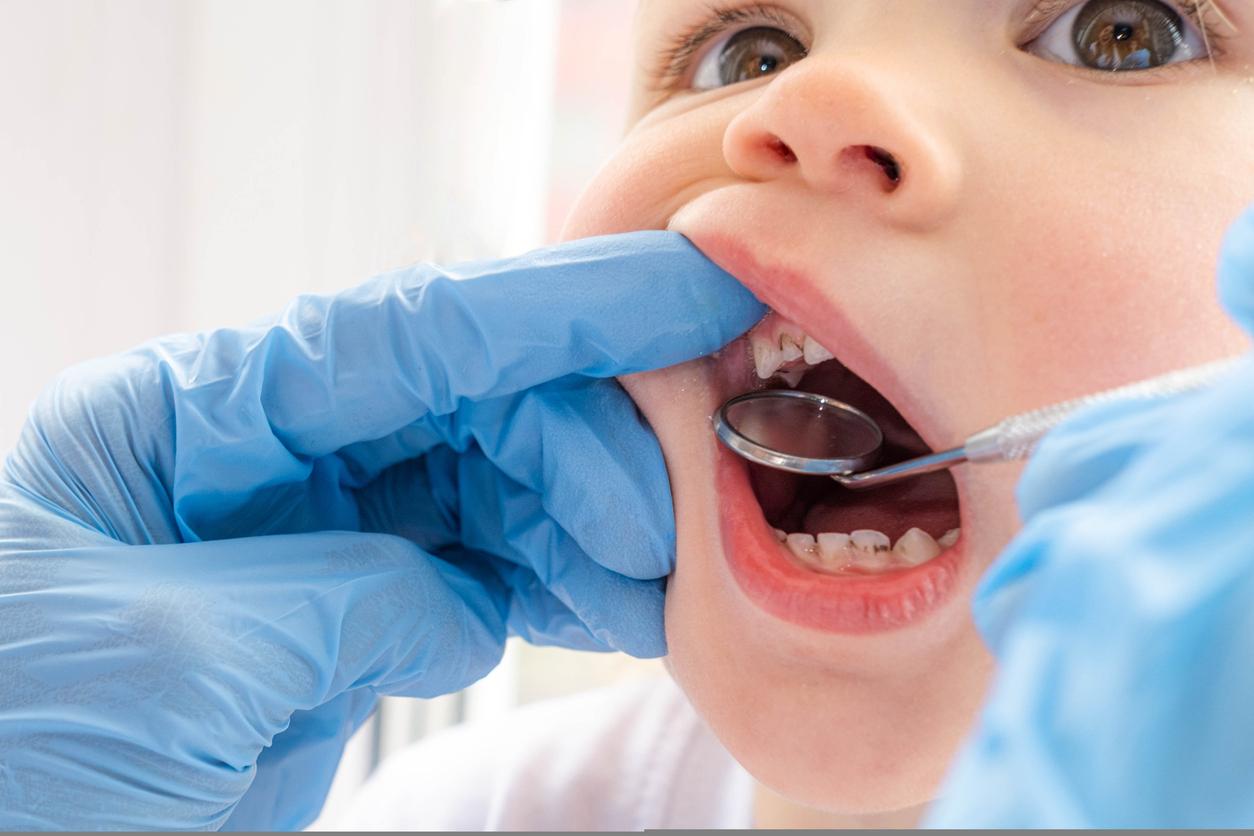As of January 1, 2025, fluoride varnishes applied to protect against dental caries will be covered from the age of one, rather than three.

- Fluoride varnishes are applied by dentists to the back teeth of toddlers to prevent cavities.
- Until now, these products are only reimbursed from the age of 3 to the age of 24.
- From January 1, 2025, they will be supported for children from the age of one.
Dental plaque, poorly mineralized enamel, poorly positioned teeth… Several factors can promote the appearance of cavities. However, the number one enemy of teeth remains sugar, particularly sucrose (in powder or pieces) and industrial sugar found in cakes, sodas, and sweets, which feed bacteria to multiply. In order to reduce the risk of cavities in children, it is necessary to reduce the premature consumption of sugary products, such as drinks, and to take care of their oral hygiene from a very young age.
Anti-caries fluoride varnishes will be covered from the age of one
“To prevent cavities, dentists can apply fluoride varnish to the back teeth two to four times a year. (…) It is a sticky paste that contains high levels of fluoride. Fluoride is a mineral naturally present in teeth that protects them from damage,” can we read on the website of Cochrane. On July 5, the Health Insurance announced that it would expand the reimbursement of these products. As a reminder, until now, anti-cavity fluoride varnishes were reimbursed for children from 3 years old to 24 years old. From January 1, 2025, coverage will be extended to children from the age of one.
This expansion of reimbursement is part of an amendment to the dental surgeons’ tariff agreement, signed Thursday by the representative union CDF (dental surgeons of France) and Health Insurance. As for classic dental care, 60% of fluoride varnishes will be reimbursed by Health Insurance and 40% by supplementary health insurance. In addition, for children in this age group, oral examinations, treatment of cavities and scaling have been revalued.
“The perinatal period” is “propitious for caries prevention interventions”
In an opinion published in 2010, the High Authority of Health (HAS) had already expressed its fears regarding the resurgence of cavities in very young children. “Between 20 and 30% of children aged 4 to 5 years had at least one untreated cavity. (…) In preventing early childhood caries (up to 3 years), despite the low level of evidence of the studies and the diversity of the strategies evaluated, strategies using fluoride topics, associated with oral hygiene education measures for parents, particularly in disadvantaged environments, have shown significant efficacy. It therefore seems that the perinatal period is favorable for caries prevention interventions, and that the early use of fluoride as soon as teeth appear is recommended.”

















